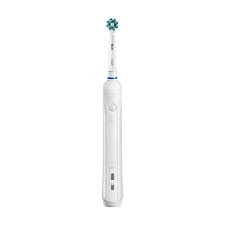Toothbrush and its care
Toothbrush and its care
By-Dr. ANKIT YADAV
Which came first toothpaste or toothbrush?
Perhaps, both were ideated together to lend oral care the most basic and
important tools it requires. Still, if it is about my blog, the one about
toothpaste came first. Toothbrushes have undergone varied changes and the
designs and bristles we get on them presently cover nearly all the functional
concerns they are meant to address. Basically, there is a different shape and
size for every age group. But yet again, the more the choices, the more
difficult it gets to make one; however, a read of this would surely make
it easier about things like the correct size and shape, regular care a brush
needs, and the right time to replace.
Toothbrush overview: -
The toothbrush is used to remove the plaque deposition on the teeth surface.
The modifications in shapes and sizes of various toothbrushes are done according
to the user's dentition variation.
Functions of toothbrush: -
- To disturb and remove plaque formation
- To clean teeth and interdental space of
food remanent and stains
- To stimulate and massage gums
- To clean the tongue
Toothbrush
consists of a head of tightly clustered bristles mounted on it followed by a
shank and a handle.
Head: - The head of the toothbrush varies in size from child to adult,
the standard sizes as per the age groups are:
- Age 0-2: - approximately 15mm in
diameter
- Age 2-6: - nearly 19mm in diameter
- Age 6-12: -about 22mm in diameter
- Age 12+: - around 25mm in diameter
Bristles: - They must be soft on gums and be of proper shape as per the teeth set.
Bristles do come in different patterns:
- Block pattern
- Wavy or v shape pattern
- Multilevel trim pattern
- Criss-cross pattern
- Polishing cup pattern
Shank: - It is present between the head and body. The varieties are:
- Straight
- Contra-angle
- Flexible
Handle: - This part is used to grip and handle the brush according to the
force and movement while brushing.
Types of toothbrush
- Manual toothbrush
- Sulcabrush
- Interdental toothbrush
- Ecological toothbrush
- Disposable toothbrush
- End tuft toothbrush
- Electric toothbrush
Maintenance of toothbrush
- Rinse your toothbrush after every use to remove the debris as well
as remnant paste
- Do not exchange your toothbrush because the body fluids and
microorganism between people can cause infection
- Store your toothbrush in an upright position and allow it to air
dry after use
- Before enclosing it in its cap make sure it is properly dry because a wet environment is favorable for the growth of microorganisms.
- Avoid the toothbrush storage nearby the toilet because there are
fecal coliform bacteria that can be released in the air after flushing or
direct contact with the user.
- Replace your toothbrush after every 3-4 months or bristles become
matted or frayed. The effectiveness of toothbrushes is decreased after the
bristles are worn out.
Professional advice: -
- Pick your toothbrush according to your
age group and the size of your oral cavity.
- When 1 tooth erupts in the oral cavity
You can wipe it with cotton soaked in water and massage the gums of the child.
- If toothbrush bristles are hard then put them in warm water for
a min so that they become soft.
- Toothbrush can be sanitized by keeping in 3% hydrogen peroxide or
Listerine mouthwash, it can reduce up to 85% bacterial load according to a
study.
- Toothbrushing for 2-3 minutes is enough two times a day with
proper toothbrush technique to maintain a healthy oral cavity.
·
Change your toothbrush after any surgery or operation because the
brush is contaminated with microorganisms and it can infect you again .
For more information and specification visit
your dentist. Regular brushing 2 times a day is necessary for good oral health
and you can use other dental aids like (dental floss, mouthwash, tongue
cleaner, scaling) for best results. Visit your nearby dental clinic for a
regular check-up every 6 months and protect your smile.









Good one 👍🏻 This reminds me of checking my toothbrush right now 😀
ReplyDeleteThnk u ma'am for the appreciation and for your valuable comment 😀
Deleteits nice
ReplyDeleteThnk u😇
DeleteAppreciabke work!!
ReplyDeleteEverybody should read it!!👏👏
Thnk u miss shweta for ur appreciation and comment
DeleteQuite informative it is and well, my toothbrush is overused; thank you for the enlightenment.
ReplyDeleteThank you sir for your valuable comment and i am happy to see the postive result of my blog in your life
DeleteThis comment has been removed by a blog administrator.
ReplyDeleteKnowledgeable
ReplyDeleteThnk u 😇
DeleteYour blogs has very important information.,your small suggestion
ReplyDeleteMakes healther gums and healther life style
Thank you and i m glad to serve you guys in future by my blogs
DeleteHighly appreciated
ReplyDeleteKeep it up👍